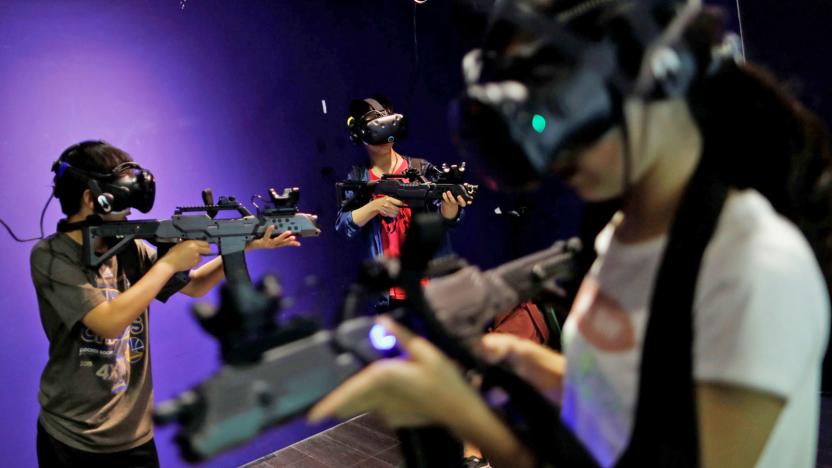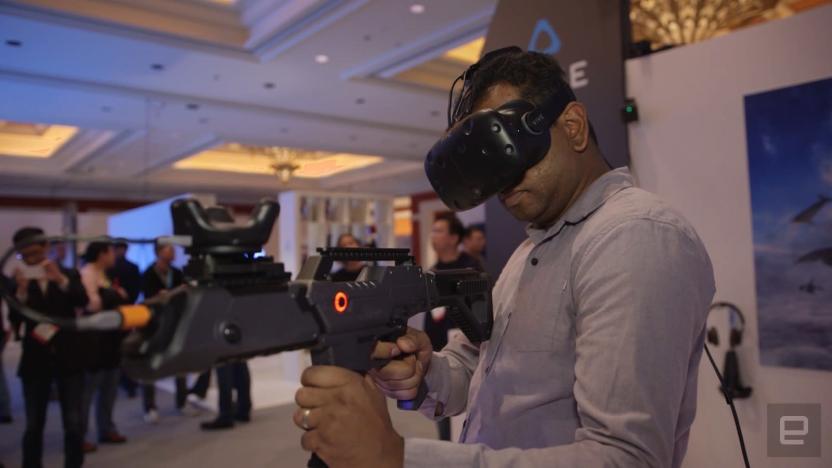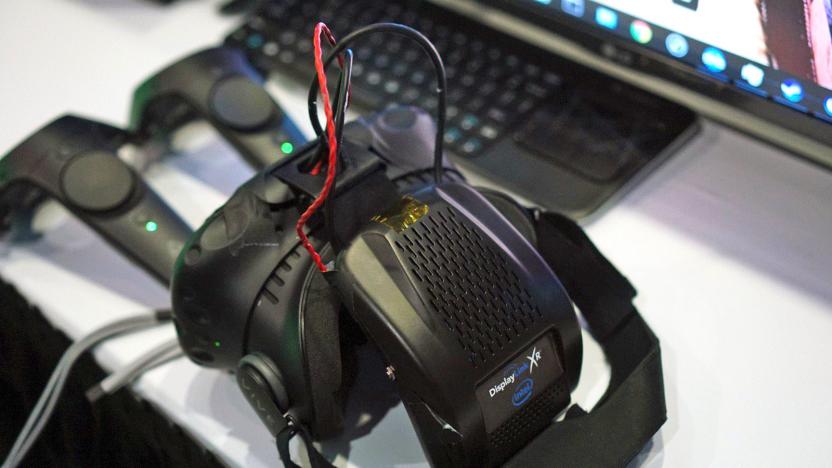wirelessVR
Latest

This wireless VR tech could make it easier to play with others
The next big hurdle for virtual reality is obvious to anyone who's put on a headset: Getting rid of all of those wires. We've seen cordless solutions from TPCast and Intel, but now Amimon, a company best known for developing wireless video technology, is getting into the ring. Its spin on wireless VR uses the 5GHz spectrum, instead of the 60GHz band used by competitors. That allows it to work through walls and without direct line of sight, something the 60GHz frequency range can't do. Most importantly, Amimon promises a lag-free experience. According to the company, it could even support up to 10 VR or AR headsets in the same room (either with their own computers, or a souped-up gaming server).

Intel focuses its WiGig efforts on wireless VR (updated)
Don't count on finding multi-gigabit WiFi in your laptop in the near future. Intel has announced that it's discontinuing virtually all of its current WiGig hardware by the end of 2017, including antennas and controllers. Instead, the focus is on using the technology for wireless VR -- don't worry, Intel knows you hate tripping over cords. The news is unfortunate if you're a fan of WiGig's potential, but it's understandable given the practical reality.

Oculus has a $200 wireless VR headset in the works for 2018
We know that truly wireless VR is the future for Oculus. Facebook CEO Mark Zuckerberg laid out his vision for wireless virtual reality last year, and shortly afterwards we got a brief glimpse at the company's "Santa Cruz" prototype headset. But it's been unclear just how long it would take Oculus to deliver a truly cord-free VR experience. Turns out, we might not have to wait too long: Oculus is apparently developing a $200 wireless VR headset for release next year, Bloomberg reports. The device, codenamed "Pacific," won't just be an empty shell for your smartphone, like the Gear VR and DayDream View, it'll pack in all of the hardware it needs for VR experiences.

Intel’s wireless HTC Vive add-on is where VR is headed
Complexity is bad for VR. The lengthy wires you need to connect a VR headset to your gaming PC or PlayStation 4 might not be a huge deal to geeks, but they're the sort of thing mainstream consumers would never live with. We know wireless is the answer. TPCast is already shipping an accessory for the HTC Vive that lets you give up on cables, and judging from our demo earlier this year, it works just as advertised.

Watch HTC Vive's wireless VR adapter and object tracker in action
Virtual reality has plenty of hurdles to surpass before it reaches mainstream acceptance, among them is the need to be tethered to a computer for high-quality VR. So it's no surprise that wireless VR tracking is a big focus for the HTC Vive this year. And on top of that, the Vive Tracker will also let developers easily bring just about anything into VR worlds. We had a chance to test out both new devices at CES this year, and while they're in fairly early stages, it's clear they'll fundamentally change the VR landscape this year.

Next for HTC Vive: Wireless VR and tracking for everything
After living through the VR frenzy of 2016, it's almost hard to believe that HTC's Vive Pre debuted at CES just a year ago. Since then, the company released the consumer edition of the headset and reorganized all its Vive business under a subsidiary. Now that it's laid the groundwork for its VR ecosystem, HTC is looking to make it flourish by focusing on developers and fine-tuning its user experience.

MIT is trying to crack wireless VR, too
Smartphone-based virtual reality headsets are great and all, but for the best games and experiences you need a dedicated facehugger tethered to a powerful PC like it's a diver's lifeline. Wireless hardware is one of the inevitable next steps for VR, and a company called TPCAST is already developing a cord-cutting peripheral for the Vive, supported by HTC's VR accelerator program. MIT's Computer Science and Artificial Intelligence Laboratory (CSAIL) is making headway in this area too, today releasing research into a wireless system that's both headset-agnostic and could address some unforeseen problems with peripherals like TPCAST's.


